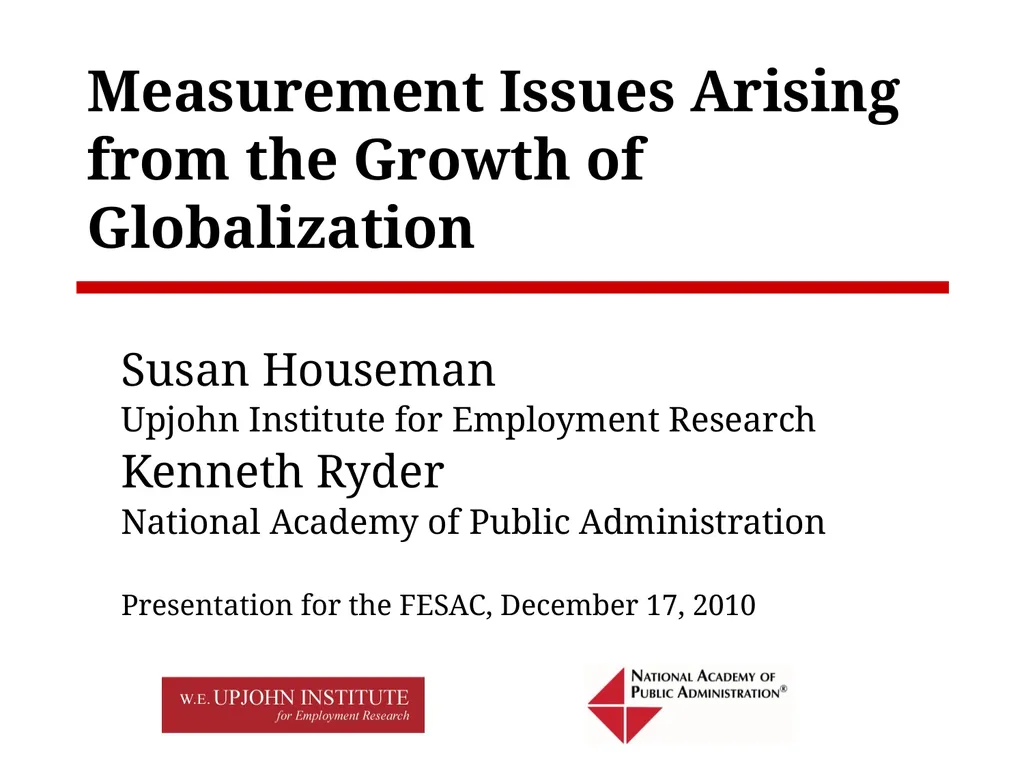
Measurement Issues Arising from the Growth of
Author: stefany-barnette | Published: 2025-05-28
Description: Measurement Issues Arising from the Growth of Globalization Susan Houseman Upjohn Institute for Employment Research Kenneth Ryder National Academy of Public Administration Presentation for the FESAC, December 17, 2010 Project Motivation
Download Presentation
Download the PPT/PDF: Download
Transcript:
Loading transcript